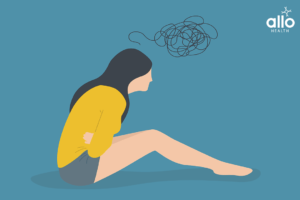What Is Dyspareunia?

Experiencing pain during sex can be a distressing and uncomfortable concern. It is important to know that you are not alone and that there are effective treatments available to help you manage this condition.
Many women experience pain during sex at some point in their lives. However, the actual number is not known since many women may not seek medical attention for this concern.
Dyspareunia is a condition that can cause discomfort or pain during sexual activity. It can occur in both men and women, but it is more common in women. There are several potential causes of dyspareunia, including physical and psychological factors.
Causes of Dyspareunia
One of the most common causes of dyspareunia is vaginal dryness, which can occur due to hormonal changes, medications, or certain medical conditions. When the vaginal tissues are dry, they can become irritated and inflamed, which can cause pain during sex. Using a water-based lubricant or vaginal moisturiser can help relieve discomfort caused by vaginal dryness.
Infections, such as yeast or bacterial infections, can also cause dyspareunia. These infections can cause inflammation and irritation of the vaginal tissues, which can lead to pain during sex. Treating the underlying infection with antibiotics or antifungal medications can help relieve the symptoms of dyspareunia.
Pelvic floor muscle spasms can also cause dyspareunia. The pelvic floor muscles are a group of muscles that support the pelvic organs and help control bladder and bowel function. When these muscles become tight or spasm, they can cause pain during sex. Pelvic floor physical therapy, which involves exercises and stretches to help relax and strengthen the pelvic floor muscles, can be helpful in relieving the symptoms of dyspareunia.

Endometriosis, a condition in which the tissue that lines the uterus grows outside of the uterus, can also cause dyspareunia. The growths can become irritated and inflamed during sex, causing pain. Treatment may involve medication to manage the pain or surgery to remove the endometrial tissue.
Vaginal atrophy, which is a common condition that occurs during menopause, can also cause dyspareunia. As oestrogen levels decrease, the vaginal tissues can become thin and dry, leading to discomfort during sex. Hormone replacement therapy or topical oestrogen treatments may be used to alleviate symptoms.
It is important to remember that dyspareunia is a common concern and there are effective treatments available. With the right treatment, many women are able to experience pain-free sex.







